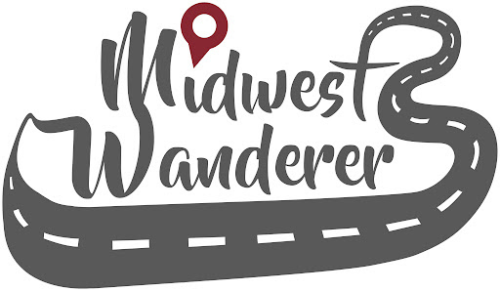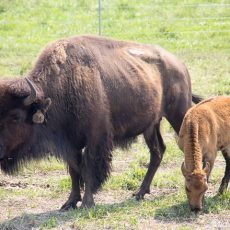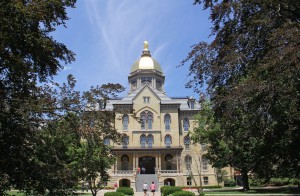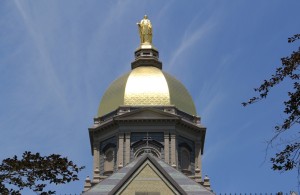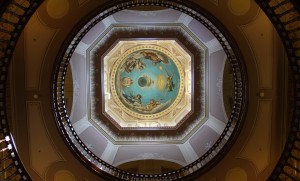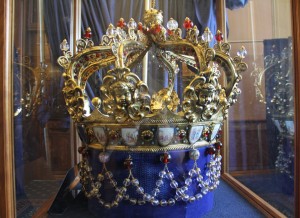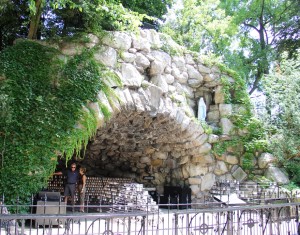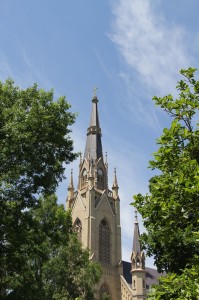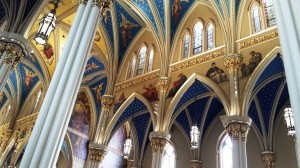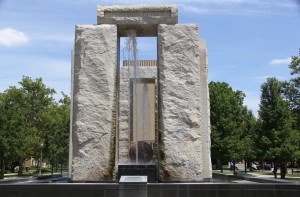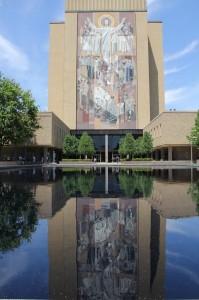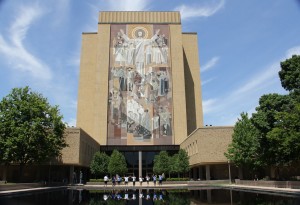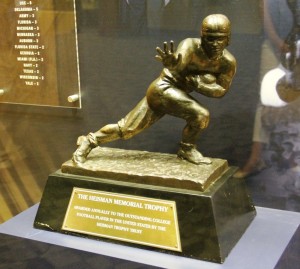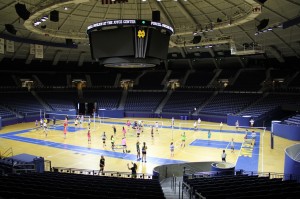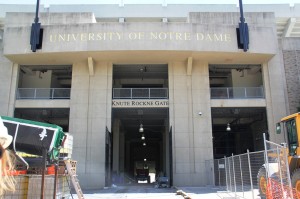The bison has been named the national mammal of the United States. It’s fitting, since it is estimated that 30 to 60 million bison lived in North America in the 1500s before huge slaughters took place as settlers moved westward. The bison was near extinction, down to about 300 head nationally before a handful of ranchers captured orphaned calves and began raising them. Today the population has grown, with bison found in national and state parks, as well as several private herds being raised for food. I toured the Broken Wagon Bison Ranch in Hobart, Indiana, where I learned more about bison and had a chance to meet the herd up close and personal. Read more
Indiana attractions
13 Fascinating Facts about Michigan City and the Old Lighthouse
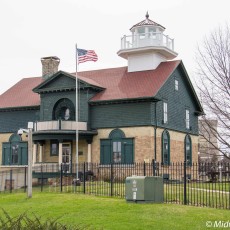
Whenever we stumble across a lighthouse, I have to take a photo. There’s something romantic about lighthouses, perhaps the beacon of light welcoming sailors into a harbor or warning them of hazards. Maybe it’s the romanticizing of the keeper’s job, as backbreaking as it was. Or maybe it’s just that the splash of color—often red—against the blue of the sky and water makes a great scenic photo. Having taken the photo of the beacon that stands at the end of a pier in Michigan City, Indiana, we were surprised to find the light keeper’s house, the original Michigan City lighthouse. Refurbished, it’s now a museum run by the Michigan City Historical Society. We visited the museum earlier this year and came away with several fascinating facts about the lighthouse and the city during our self-guided tour. Here are 13 of them: Read more
Tour the South Bend Chocolate Company Factory
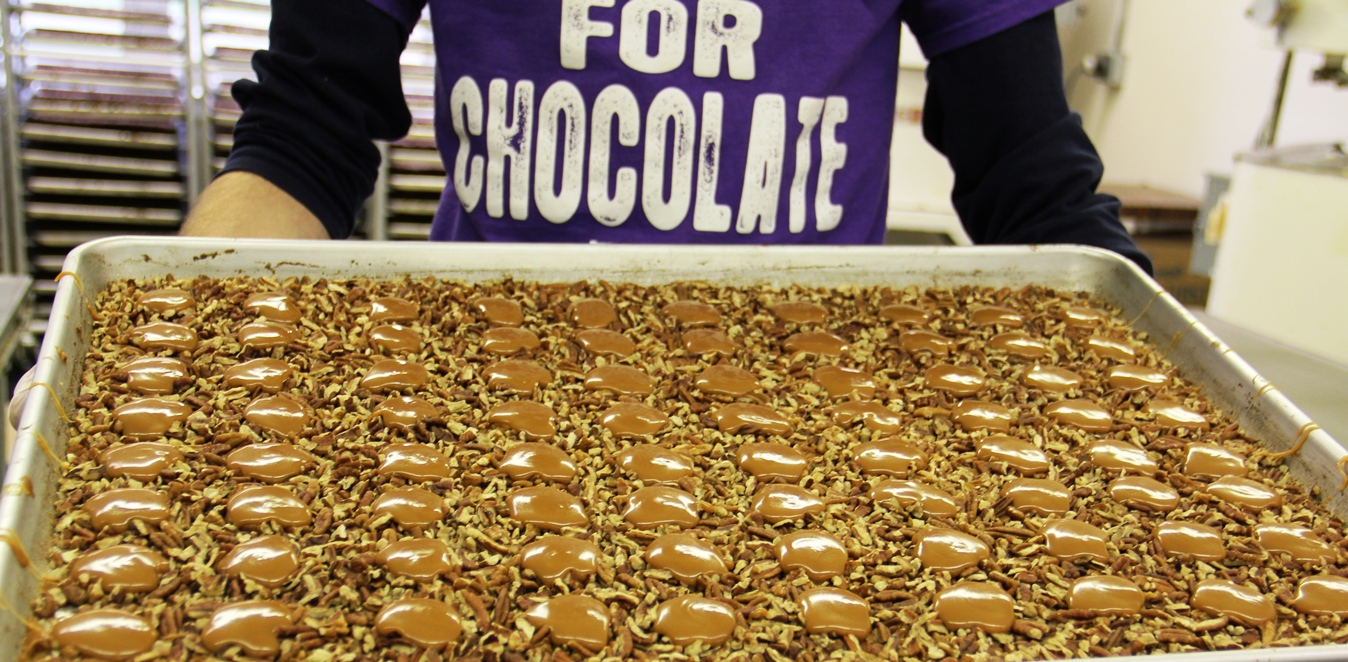
Dark chocolate is my downfall. One whiff of the decadent confection, and I sniff and follow the aroma waves like in a cartoon until I find the source. Dark chocolate covered nuts, dark chocolate covered dried cherries, bittersweet chocolate mousse, chocolate fudge cake with fudge frosting—you name it, when I smell it or see it, I cave. Forget the diet right now; I’ll eat salads for the rest of the week. So when I had an opportunity to tour Indiana’s South Bend Chocolate Company factory, of course I didn’t turn it down.
Before taking us into the production area, our tour guide, Chris, nicknamed Captain Crunch, gave us a lesson on where chocolate comes from. It starts with cocoa pods, which are harvested twice a year.
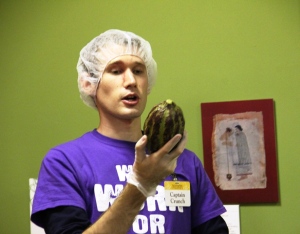 You have to crack the pod to get to the bean inside. There is only one bean per pod. Inside the bean are 20 to 60 cacao nibs, and that’s what’s used to make chocolate.
You have to crack the pod to get to the bean inside. There is only one bean per pod. Inside the bean are 20 to 60 cacao nibs, and that’s what’s used to make chocolate.
Chicago’s Blommer Chocolate Company, North America’s largest cocoa processor and ingredient supplier, turns the cacao nibs into giant, thick chocolate bars, which is what South Bend Chocolate Company starts with in making their candy.
Don’t miss a Midwest Wanderer post. For a FREE subscription, enter your e-mail address in the Subscribe2 box to the left and click Subscribe.
In the factory I was expecting to see the candy speeding past on conveyor belts like on the old I Love Lucy episode where Lucy and Ethel get jobs in a candy factory.
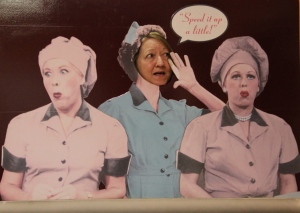 It turns out that production slows down on Saturdays, but the tradeoff to not seeing production in action is more samples. So although we saw the conveyor belts, they were at a standstill with no candy on them. Captain Crunch assured us that the belts don’t move quite as quickly as it did for Lucy and Ethel anyway.
It turns out that production slows down on Saturdays, but the tradeoff to not seeing production in action is more samples. So although we saw the conveyor belts, they were at a standstill with no candy on them. Captain Crunch assured us that the belts don’t move quite as quickly as it did for Lucy and Ethel anyway.
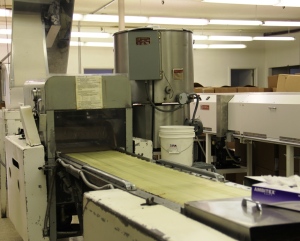 We did see the chocolate enrober that looks like a waterfall, where the candies are coated, as well as the chocolate melter that holds 500 pounds of chocolate.
We did see the chocolate enrober that looks like a waterfall, where the candies are coated, as well as the chocolate melter that holds 500 pounds of chocolate.
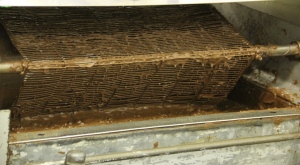 We also saw two varieties of candy waiting for the next process step: fudge and pecan patties (like Turtles).
We also saw two varieties of candy waiting for the next process step: fudge and pecan patties (like Turtles).
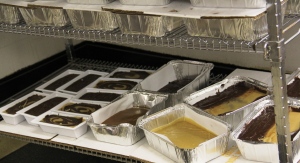
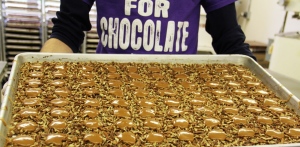 After touring the production area, we were allowed to choose two chocolate samples.
After touring the production area, we were allowed to choose two chocolate samples.
That was the end of the free basic tour. However, we were on the Inside Scoop Tour (fee is $4), so we got an added bonus. We dipped a spoon into chocolate that could be used then to stir a hot beverage.
 While we were waiting for our spoons to cool and harden, we watched an educational but humorous film about chocolate making.
While we were waiting for our spoons to cool and harden, we watched an educational but humorous film about chocolate making.
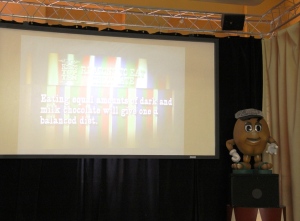 Following the tour, we wandered through the small chocolate museum that includes information about the history of candy, as well nostalgic displays of candy packaging, including Mounds, one of my favorites.
Following the tour, we wandered through the small chocolate museum that includes information about the history of candy, as well nostalgic displays of candy packaging, including Mounds, one of my favorites.
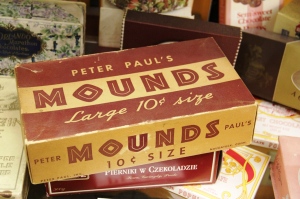 I was surprised to see a display of Frango Mints boxes, the candy that at one time was made in Chicago’s flagship Marshall Field’s store. (The store is now Macy’s, and Macy’s carries Frango Mints under the Marshall Field name.)
I was surprised to see a display of Frango Mints boxes, the candy that at one time was made in Chicago’s flagship Marshall Field’s store. (The store is now Macy’s, and Macy’s carries Frango Mints under the Marshall Field name.)
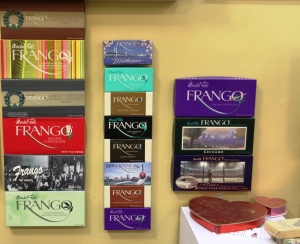 One last stop before leaving: the outlet store, where I stocked up my own stash of chocolate, all dark.
One last stop before leaving: the outlet store, where I stocked up my own stash of chocolate, all dark.
Tour are offered at the South Bend Chocolate Company factory, located at 3300 West Sample Street in South Bend, Indiana, Monday through Saturday. The free basic tour runs 20 minutes; the Inside Scoop Tour is 45 minutes. Check the web site for tour and outlet store hours.
Disclosure: My tour of the South Bend Chocolate Company factory was hosted by Visit South Bend and the South Bend Chocolate Company, but any opinions expressed in this post are my own.
Thank you for reading Midwest Wanderer. Don’t miss a post. Enter your e-mail address below and click Subscribe to be notified whenever I publish another post. Subscription is FREE. After subscribing, be sure to click the link when you get the e-mail asking you to confirm. – Connie
Touring the University of Notre Dame Campus, South Bend, Indiana
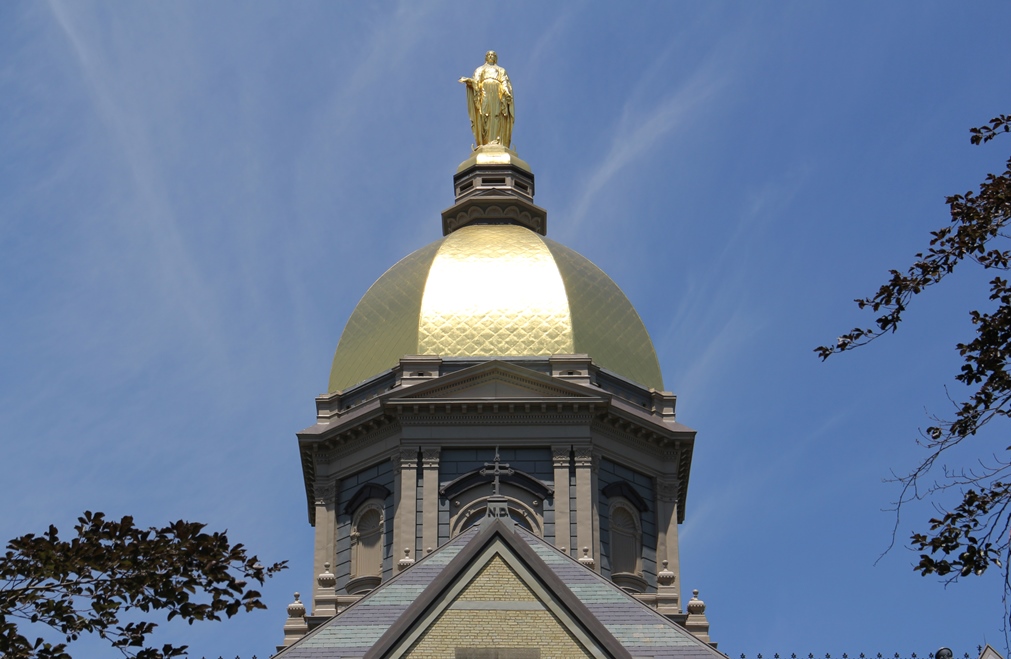
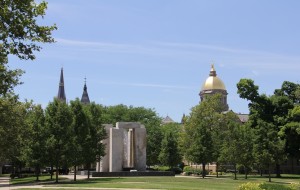 Football, the Gold Dome and top academics were really the only things I knew about the University of Notre Dame before I toured the campus last month. Having been there only once, decades ago, I didn’t remember, or maybe didn’t appreciate at the time, the beauty of the campus, including the fascinating art and architecture, as much a draw for tourists as the school’s athletics programs.
Football, the Gold Dome and top academics were really the only things I knew about the University of Notre Dame before I toured the campus last month. Having been there only once, decades ago, I didn’t remember, or maybe didn’t appreciate at the time, the beauty of the campus, including the fascinating art and architecture, as much a draw for tourists as the school’s athletics programs.
I had the honor of taking a tour led by 1964 Notre Dame alumnus Jack Lafferty, who often conducts private group tours of the campus and is a wealth of information about the buildings, the artwork and the history of the university.
Don’t miss a Midwest Wanderer post. For a FREE subscription, enter your e-mail address in the Subscribe2 box to the left and click Subscribe.
There are so many different varieties of trees on the grounds, the campus can actually be considered an arboretum. From the beginning, Father Sorin, the university founder, brought a diverse variety of trees to the campus, and the tradition continued later. This sycamore is about 250 years old.
The Main Building, used mostly for administration today, was built in 1879 after the original building was destroyed in a fire. In the beginning the Main Building included classrooms, dining and living space.
The building, on the National Register of Historic Places, Is best known for its gold dome with a statue of Mary, Mother of God, atop of the dome. The dome has been regilded five times, the latest in 2005 at a cost of $300,000.
Inside the building, stand in the circle on the floor in the center of the building and look up to see the inside of the dome.
The Rosary Crown, on display in the Main Building was originally planned to be placed on the statue atop the dome. Commissioned in France by university benefactors, the Rosary Crown includes fifteen decades of crystal beads and fifteen plates depicting the mysteries of the rosary. The crown was never placed on the dome but instead was placed on another statue of Mary inside Sacred Heart Church, was stolen, recovered and repaired.
The Grotto at Notre Dame is a one-seventh size replica of the Grotto of Our Lady of the Lourdes in France, where the Virgin Mother appeared to St. Bernadette in 1858. The rosary is prayed at the grotto every day at 6:45 p.m.
The Basilica of the Sacred Heart may or may not be open to tour, depending on church events, but if you get the chance, do go in. The beauty will astound you. The basilica wasn’t open for tours on my visit, but I went to Sunday Mass there and was able to see it then.
Sculptures and other works of art are scattered throughout the campus, but a few of them stand out due to sheer size. The Stonehenge Fountain serves as a memorial to Notre Dame alumni who lost their lives in the military.
At the Hesburgh Library, a large mural, known as “Touchdown Jesus,” reflects in the Reflecting Pool, creating a double image.
Moving to the athletic side of Notre Dame, you can view seven Heisman trophies in the Sports Heritage Hall of Fame during the school year. Recipients are allowed to take them home during the summer months, so on my visit, only one Heisman trophy was on display.
The Sports Heritage Hall of Fame is located in the concourse of the Purcell Center, home to the Fighting Irish basketball and volleyball teams.
We didn’t get to tour the football stadium, but we did go past it and peek into the gates, which were under construction at the time.
A helmet for each All-American Notre Dame player is on the wall inside the gates.
 Each of the stadium’s twelve gates is named after a winning coach. Notre Dame has had eleven national championships, so one gate has yet to be named.
Each of the stadium’s twelve gates is named after a winning coach. Notre Dame has had eleven national championships, so one gate has yet to be named.
The Notre Dame architecture, art and athletics are worth a visit to the university campus. As I mentioned, my tour guide, Jack Lafferty, conducts mostly private tours. However, free public campus tours are led Monday through Friday by Notre Dame students. Tours do not include the stadium. Check the Notre Dame web site for tour details.
Disclosure: My tour of the University of Notre Dame campus was hosted by Visit South Bend, but any opinions expressed in this post are my own.
Thank you for reading Midwest Wanderer. Don’t miss a post. Enter your e-mail address below and click Subscribe to be notified whenever I publish another post. Subscription is FREE. After subscribing, be sure to click the link when you get the e-mail asking you to confirm. – Connie
